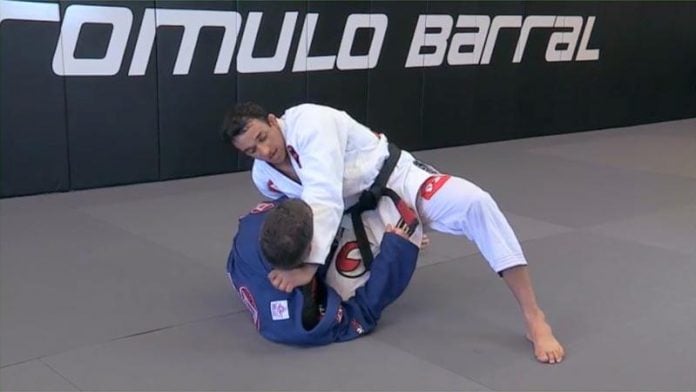
Did you train BJJ today? If so, you most likely rolled, at least a couple of rounds. Now, I can’t tell you everything that happened in those rolls, but I can all but guarantee that in each one of them, either you or your partner ended up attempting, or completing the knee cut pass. It is a pass that is so widespread (and effective) that rarely a roll goes by without someone going for it. With the emergence of the leg lock game, the pass just became even more popular, given that it serves as an entry point into the Inside Senkaku position. But what happens when you’re on the receiving end of the pass? Check out several knee cut pass defense options to test out anyone thinking they can pass your guard.
Knee cut pass defense is not hard, but it is not simple either. There are several “sticking” points in the past, and there’s no guarantee you’ll manage to mount your defense before the top person completes the pass. Luckily, options include defenses that are effective early, in the middle, and in the late stages of the pass. However, there are grip fights and body positing battles that you need to win if you’re to defend the pass. The knee cut is effective because it is hard to stop, but it is far from impossible to prevent.
The Pass Everyone Loves To Use
Why does everyone use the knee cut pass? It works and is uncomfortable for the bottom person. Those are good reasons. However, there’s more to it. Way more. The knee cut pass works because of several things that give it a huge mechanical advantage. However, before I get into those, I want to touch on another subject that makes this pass of widespread – entries. The pass is easily available from a host of different situations, and more importantly, from a bunch of different guards with just slight adjustments. That makes it accessible, on top of effective.
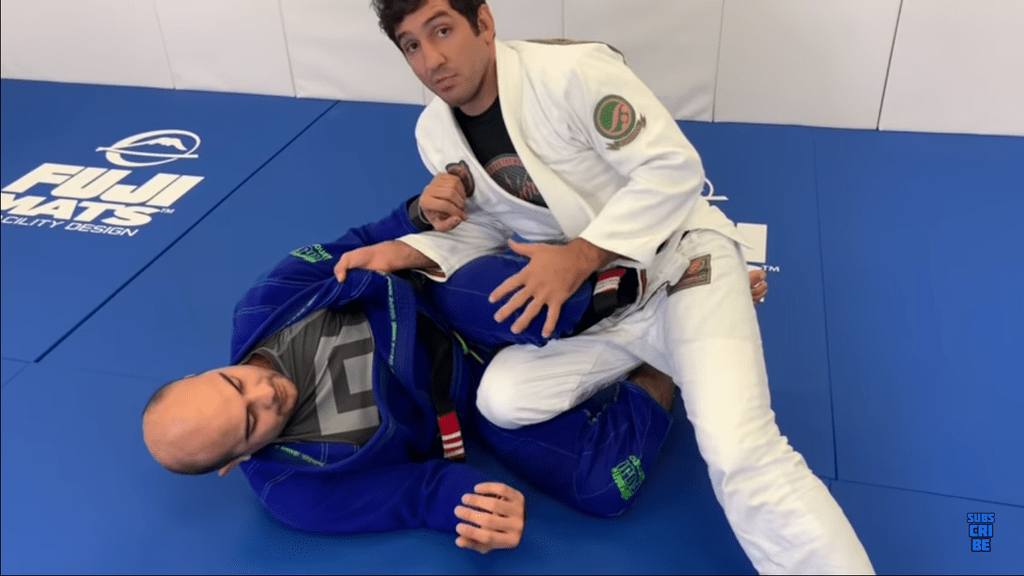
Another aspect that makes this pass different from others is the fact that people can hang out midway through it, or even consider other passing options, or leg locks. This provides the knee cut with a moment of stability and makes knee cut pass defense even more challenging. Actually, it makes knee cut pass defense challenging if you’re not aware of all the things I just wrote about, If you know them, though, it is an entirely different ball game.
After all, it wouldn’t be BJJ if we couldn’t turn strengths into weaknesses, right?
Knee Cut Pass Defense Options
How do you mount a successful knee cut pass defense? Win the grip fight. This is absolutely imperative regardless of what technique or concept you’re using to actually defend the pass. When I say grip fight I actually mean a very specific one – the grip fight for the far side underhook. Since it wouldn’t be really wise for you to go for an underhook of your own. All you want is to control the wrist of the opponent’s arm that is supposed to get the underhook. If they can’t get it, you’ll be able to mount different defenses and /or counters at different stages of the knee cut pass.
Secondly, you need to know the weak points of someone that is in the knee cut position. Balance is one thing, weight placement through the staple leg is another, and hip positioning (of the opponent) is the third one. There are more, but these three will be crucial when explaining the knee cut defense options I’m sharing next.
The Hip Escape
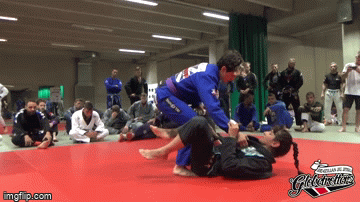
One thing to remember is to keep a hold of that grip. The hip escape knee cut pass defense is done in the simplest way possible – place the free leg on the ground and shrimp away. Once your knee is free from the staple (you’ll be surprised at how easy this is) you can place the top leg over the arm, or directly on the hip and recover any guar you want.
The RDL Lockdown
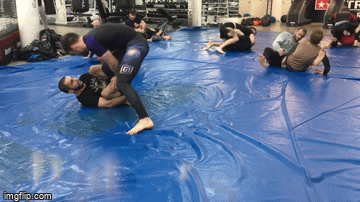
The Bump
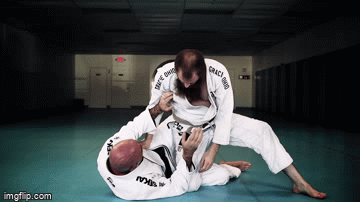
The Head Push

In Summary
Knee cut pass defense is something that you need to practice in order to get good at it. The pass is powerful and with all the Gi grips available in particular it can be difficult to figure out which defense option to use. The good thing is that all these defenses tie into each other since there are defenses for every stage of the pass. Simply put, drill them long enough and you’ll laugh knee cut passes off.


![Darce Choke Encyclopedia – Origins, Mechanics and Variations [2024] BJJ, choke, Brabo, BJJ Darce Choke, D'arce Choke, Darce BJJ Choke](https://bjj-world.com/wp-content/uploads/2017/11/JungPoirierLeeYahoo-218x150.jpg)









![Best Marcelo Garcia Techniques by Team Marcelo Garcia DVD Review [2025] Best Marcelo Garcia Techniques by Team Marcelo Garcia DVD Review](https://bjj-world.com/wp-content/uploads/2025/02/best-marcelo-garcia-techniques-dvd-review-218x150.png)
![Forging The De La Riva Guard Giancarlo Bodoni DVD Review [2025]](https://bjj-world.com/wp-content/uploads/2025/02/de-la-riva-guard-giancarlo-bodoni-dvd-review-218x150.png)

![Breaking Their Guard Mikey Musumeci DVD Review [2025] Breaking Their Guard Mikey Musumeci DVD Review](https://bjj-world.com/wp-content/uploads/2025/02/breaking-their-guard-mikey-musumeci-dvd-review-218x150.png)

![Breaking Their Guard Mikey Musumeci DVD Review [2025] Breaking Their Guard Mikey Musumeci DVD Review](https://bjj-world.com/wp-content/uploads/2025/02/breaking-their-guard-mikey-musumeci-dvd-review-100x70.png)

![How To Knee Cut Junny Ocasio BJJ DVD Review [2025] How To Knee Cut Junny Ocasio BJJ DVD Review](https://bjj-world.com/wp-content/uploads/2025/02/how-to-knee-cut-junny-ocasio-bjj-dvd-review-100x70.png)






![Mastering Control From Top Position Trent Hidlay DVD Review [2024] Mastering Control From Top Position Trent Hidlay DVD Review](https://bjj-world.com/wp-content/uploads/2024/11/control-from-top-position-trent-hidlay-dvd-review-100x70.png)
![A Blueprint For Smeshing Khabib Nurmagomedov DVD Review [2024] A Blueprint For Smeshing Khabib Nurmagomedov DVD Review](https://bjj-world.com/wp-content/uploads/2024/10/blueprint-for-smeshing-khabib-nurmagomedov-dvd-review-100x70.png)

![Jett Thompson Master Ankle and Aoki Lock DVD Review [2024] Jett Thompson Master Ankle and Aoki Lock DVD Review](https://bjj-world.com/wp-content/uploads/2024/09/jett-thompson-master-ankle-and-aoki-lock-dvd-review-100x70.png)

![Jeff Glover DVD Bundle Review: Chokin’ Around With Uncle Jeff [2024] Jeff Glover DVD Bundle Review: Chokin' Around With Uncle Jeff](https://bjj-world.com/wp-content/uploads/2024/10/jeff-glover-dvd-bundle-review-chokin-around-100x70.png)
![Intro To Hip Mobility for Guard Players Joshua Presley DVD Review [2024] Intro To Hip Mobility for Guard Players Joshua Presley DVD Review](https://bjj-world.com/wp-content/uploads/2024/09/hip-mobility-for-guard-joshua-presley-dvd-review-100x70.png)

![Darragh O’Conaill Crucifix Encyclopedia DVD Review [2024] Darragh O'Conaill Crucifix Encyclopedia DVD Review](https://bjj-world.com/wp-content/uploads/2024/10/darragh-oconaill-crucifix-encyclopedia-dvd-review-100x70.png)

![Total Domination Top Control Mariusz Domasat DVD Review [2024] Total Domination Top Control Mariusz Domasat DVD Review](https://bjj-world.com/wp-content/uploads/2024/09/domination-top-control-mariusz-domasat-dvd-review-100x70.png)

![Closed Guard Reintroduced Adam Wardzinski DVD Review [2025] Closed Guard Reintroduced Adam Wardzinski DVD Review](https://bjj-world.com/wp-content/uploads/2025/01/closed-guard-reintroduced-adam-wardzinski-dvd-review-100x70.png)


![Tricks for Unstoppable Takedowns Georges St Pierre DVD Review [2024] Tricks for Unstoppable Takedowns Georges St Pierre DVD Review](https://bjj-world.com/wp-content/uploads/2024/12/unstoppable-takedowns-georges-st-pierre-dvd-review-100x70.png)

